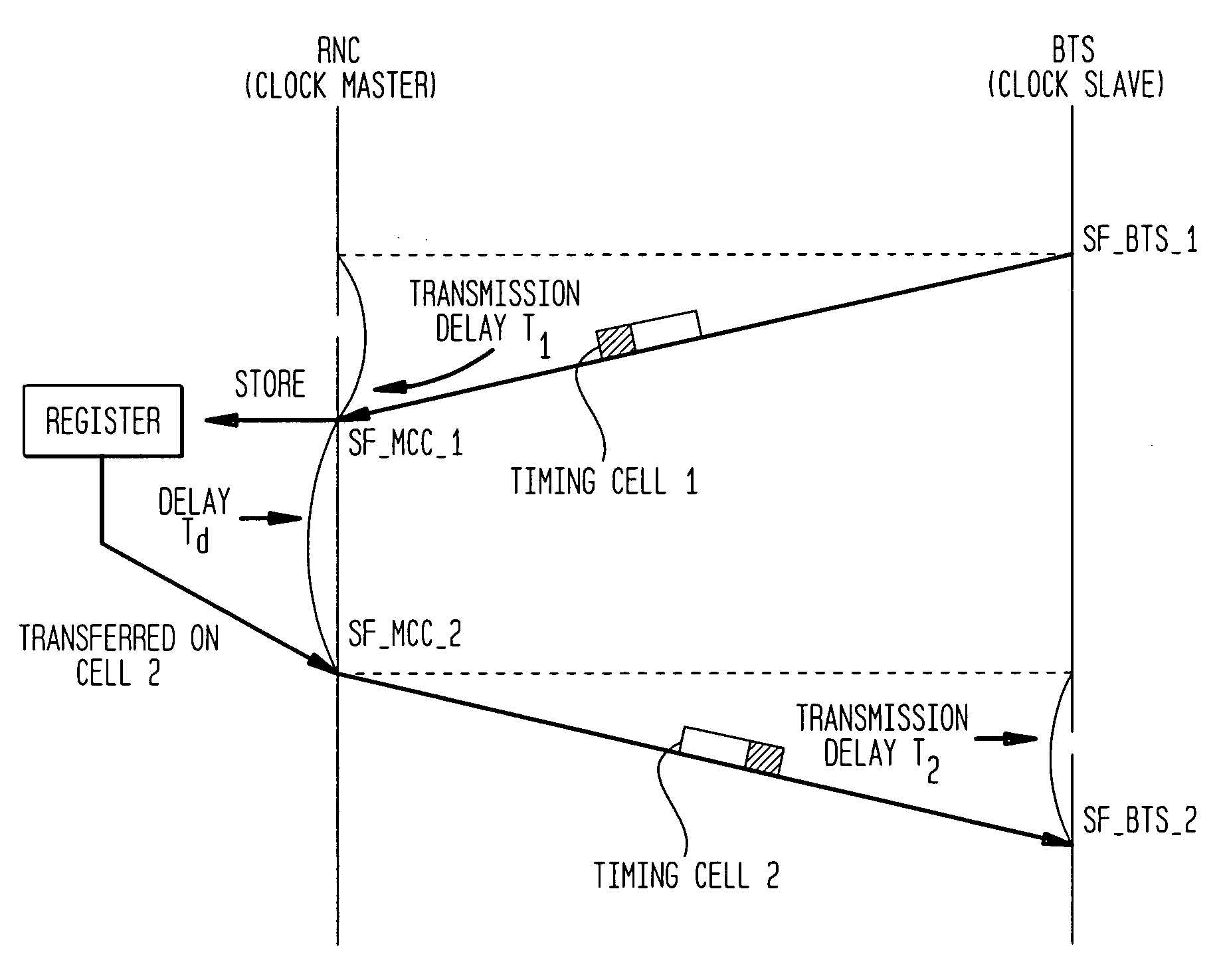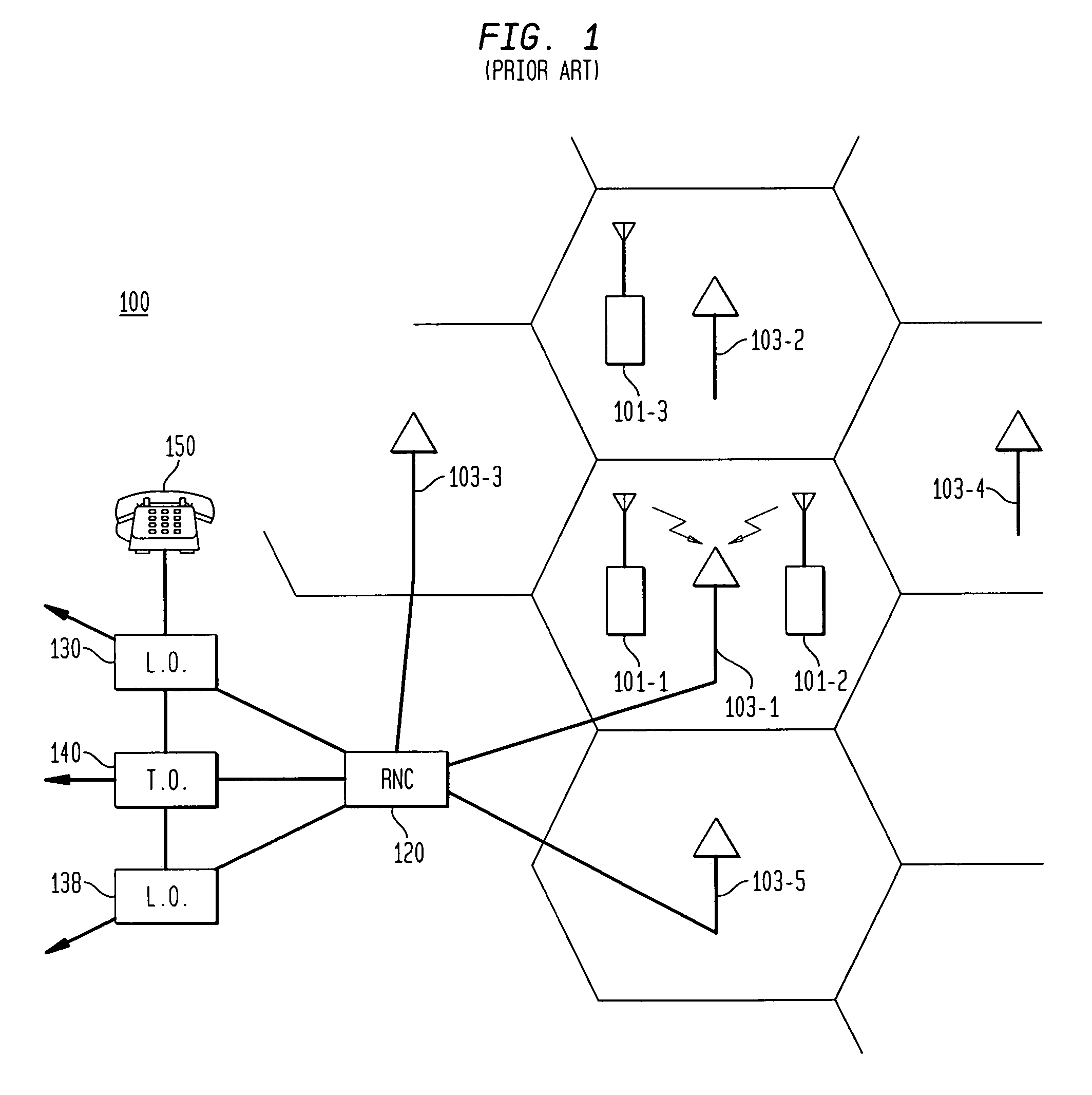Base station transceiver to radio network controller synchronization filtering function
a technology of synchronization function and base station, applied in the field of telecommunications, can solve the problems of large time error, inability to account for delays that arise, and inability to know, so as to achieve accurate synchronization time, accurately synchronize time, and accurately hone in on proper delay
- Summary
- Abstract
- Description
- Claims
- Application Information
AI Technical Summary
Benefits of technology
Problems solved by technology
Method used
Image
Examples
Embodiment Construction
[0018]Another way to perform time synchronization would be to accumulate timing data samples from several time synchronization communications between the system clock master and the other components within the system (i.e., the clock slave components). Each data sample should represent a transmission delay experienced by the clock master and a slave component during the communication with each other. For example, when the clock master sends a message to a clock slave, the message is not received by the slave until after a transmission delay. If the delay where known, than the delay could be added to the transmitted clock master time to calculate the current clock master time. This would improve the accuracy of the time synchronization process. The transmission delay may vary from communication to communication. Thus, to get a better judge of the typical transmission delay experienced between the clock master and a clock slave, several samples are used and an average transmission del...
PUM
 Login to View More
Login to View More Abstract
Description
Claims
Application Information
 Login to View More
Login to View More - R&D
- Intellectual Property
- Life Sciences
- Materials
- Tech Scout
- Unparalleled Data Quality
- Higher Quality Content
- 60% Fewer Hallucinations
Browse by: Latest US Patents, China's latest patents, Technical Efficacy Thesaurus, Application Domain, Technology Topic, Popular Technical Reports.
© 2025 PatSnap. All rights reserved.Legal|Privacy policy|Modern Slavery Act Transparency Statement|Sitemap|About US| Contact US: help@patsnap.com



